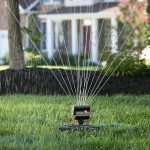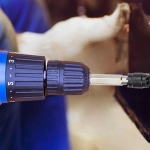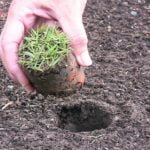Dandelions, with their cheerful yellow blooms and fluffy seed heads, might seem innocent, but they’re tenacious invaders that can quickly compromise the beauty and health of your lawn. These common weeds aren’t just an aesthetic nuisance; they fiercely compete with your desirable grass for essential nutrients, water, and sunlight, potentially weakening your turf over time. Understanding the dandelion’s robust survival tactics is the first step toward reclaiming your verdant landscape.
This comprehensive guide provides unique, copyright-free strategies to help you effectively remove dandelions from your lawn and prevent their return. From bolstering your grass’s natural defenses to targeted removal methods, you’ll learn how to achieve a pristine, dandelion-free lawn.
Understanding Your Green Foe: The Dandelion’s Resilience
To win the battle against dandelions, it’s crucial to appreciate what makes them so persistent:
Deep Taproot: Unlike many shallow-rooted weeds, dandelions possess a remarkably long, carrot-like taproot that can plunge 10 to 18 inches deep into the soil. This deep anchorage provides access to moisture and nutrients, making them incredibly hardy. More importantly, if even a small fragment of this taproot remains in the ground after attempted removal, the plant can regenerate.
Abundant Seed Production: After their yellow flowers fade, dandelions transform into familiar white “puffballs,” each containing hundreds of parachute-like seeds. These seeds are effortlessly carried by the wind, allowing them to rapidly colonize new areas, often traveling surprising distances.
Adaptive Nature: Dandelions are remarkably adaptable, thriving in a wide range of soil conditions, even compacted or poor-quality soil where grass struggles. They are often among the first plants to emerge in spring and can continue to grow and spread well into the autumn.
Cultivating a Strong Defense: Prevention is Paramount
The most sustainable and effective long-term strategy for dandelion control is to foster a dense, vigorous lawn that naturally outcompetes weeds. Think of your healthy grass as a thick, green barrier.
Optimal Mowing Height: Resist the urge to scalp your lawn. Mowing grass taller (ideally between 2.5 to 3.5 inches) allows the grass blades to grow denser and shade the soil beneath. This shading is critical because it deprives dandelion seeds of the sunlight they need to germinate, and it keeps the soil surface cooler, less hospitable for weed sprouts.
Deep, Infrequent Watering: Instead of light, frequent sprinkles, water your lawn deeply (aiming for soil penetration of 4 to 6 inches) but less often. This encourages your grass roots to grow deeper, making them more resilient to drought and better equipped to compete with the deep taproots of dandelions for underground resources.
Balanced Fertilization: A well-nourished lawn is a robust lawn. Conduct a soil test every few years to determine your lawn’s specific nutrient needs. Applying the right balance of fertilizers at appropriate times (typically spring and fall) promotes strong grass growth, leaving minimal space and resources for invasive weeds.
Strategic Overseeding: Periodically overseeding your lawn, especially in the fall, helps to thicken the turf. Spreading new grass seed into existing lawn areas fills in any thin or bare patches, denying dandelion seeds open ground to establish themselves.
Define Boundaries with Edging: Installing physical barriers, such as plastic or metal edging, between your lawn and garden beds can help contain dandelion spread and prevent seeds from migrating into your grass.
Direct Confrontation: Manual Removal Techniques
For smaller infestations or as a preferred chemical-free approach, manual removal is highly effective, especially when dandelions are young.
The Art of Hand-Pulling:
Timing is Everything: The absolute best time to hand-pull dandelions is after a significant rainfall or a thorough watering, when the soil is soft and pliable. This drastically increases your chances of extracting the entire taproot without it breaking.
Technique: Grasp the dandelion firmly at its base, close to the soil line. Apply a steady, firm pull, ideally with a slight twisting motion, aiming to extract the entire taproot. If the root snaps, the dandelion can easily regrow from the remaining piece.
Specialized Tools: Investing in a good “dandelion weed puller” or “stand-up weed grabber” can transform this chore. Tools like these are designed with long handles and claw mechanisms that grip the root and use leverage to extract the whole plant, saving your back and knees. For smaller weeds, a handheld dandelion fork or a narrow digging trowel can also be very effective.
Targeted Digging: For mature, deeply rooted dandelions that resist pulling, a small spade or sturdy trowel is your best friend. Dig a circle around the plant, ensuring you go deep enough to get beneath the full length of the taproot. Carefully lift the soil and plant to remove it entirely.
| PROS of Manual Removal | CONS of Manual Removal |
|---|---|
|
|
Chemical Intervention: Strategic Herbicide Use
When faced with a widespread dandelion takeover, herbicides can offer an efficient solution. However, precise application and strict adherence to safety guidelines are non-negotiable.
1. Choosing the Right Herbicide:
Selective Broadleaf Herbicides: These are specifically formulated to target and kill broadleaf weeds like dandelions without harming your lawn grass. Look for active ingredients such as 2,4-D, MCPP (mecoprop), or dicamba. Many common “weed and feed” products for lawns incorporate these compounds.
Non-Selective Herbicides (e.g., Glyphosate): These powerful chemicals destroy nearly all vegetation they contact, including your desirable grass. Reserve non-selective herbicides only for isolated dandelion patches in areas where you intend to replant or where grass isn’t present, like cracks in sidewalks or driveways. Never use non-selective herbicides on your main lawn.
2. Optimal Application Timing:
Spring Application: Apply broadleaf herbicides in mid to late spring when dandelions are young and actively growing. This targets them during a vulnerable stage.
Fall Application (Highly Recommended): The most effective time for broadleaf herbicide application is typically in the fall (late September through early November in many temperate regions). During this period, dandelions are actively translocating nutrients from their leaves down to their roots to store energy for winter. When herbicides are applied, they are efficiently carried down to the deep taproot, resulting in a more thorough and lasting kill.
3. Application Methods:
Spot Treatment: For scattered dandelions, use a pump sprayer to apply a liquid broadleaf herbicide directly onto individual weeds. This minimizes the amount of chemical used on your overall lawn.
Broadcast Application: For widespread infestations, you can use a broadcast spreader to apply granular herbicides or a hose-end sprayer for liquid products across your entire lawn. Always follow the product’s label instructions precisely for coverage rates and post-application watering.
4. Crucial Safety Measures:
Always Read the Label: This is paramount. The product label contains vital information on application rates, mixing instructions, correct timing, required personal protective equipment (PPE like gloves, eye protection), and safe re-entry intervals for people and pets.
Avoid Wind: Never apply herbicides on windy days. Wind can cause herbicide drift, unintentionally harming desirable plants in your garden or on neighboring properties.
Check Forecast: Ensure no rain is expected for several hours after application; most herbicides need time to be absorbed by the plant leaves.
Protect Children and Pets: Keep children and pets off treated lawn areas until the herbicide has completely dried, or for the specific duration indicated on the product label.
Eco-Friendly Alternatives: Organic and Natural Control
For those seeking to avoid traditional synthetic chemicals, several natural methods can contribute to dandelion control, though they may require more frequent application or be less aggressive.
- Boiling Water: A simple, effective method for isolated dandelions. Pour boiling water directly onto the crown of the plant. The heat shocks the roots, often killing the dandelion. Be aware that boiling water will also kill any surrounding grass or plants it touches, so use it selectively.
- Horticultural Vinegar (Acetic Acid): This is much stronger than household vinegar (typically 10-20% acetic acid). It works by rapidly lowering the pH of plant cells, causing them to dry out and die.
- Application: Apply undiluted horticultural vinegar directly to dandelion leaves, ideally on a sunny, dry day for maximum effect.
- Considerations: Like boiling water, it’s non-selective and will damage or kill any plant material it contacts, including your grass. It primarily burns down the top foliage, and the deep taproot may survive, leading to regrowth. Multiple applications are often necessary. Handle with care; higher concentrations of acetic acid can cause skin and eye irritation.
- Corn Gluten Meal (Natural Pre-Emergent): A natural byproduct of corn processing, corn gluten meal acts as a pre-emergent herbicide, meaning it inhibits seed germination.
- Application: Apply corn gluten meal to your lawn in early spring *before* dandelion seeds have a chance to sprout. It will not kill existing dandelions.
- Considerations: It also serves as a mild nitrogen fertilizer for your lawn. For optimal effectiveness, it typically requires consistent application over several seasons to build up its inhibitory properties in the soil.
After the Battle: Post-Removal and Ongoing Lawn Health
Removing dandelions is a crucial step, but ensuring they don’t return requires ongoing attention to your lawn’s health.
- Repair Bare Spots: Any areas where dandelions were removed, especially larger ones, will leave bare patches. These open areas are prime real estate for new weed seeds to germinate. Promptly reseed these spots with high-quality grass seed or lay down small patches of sod to encourage dense grass growth.
- Sustain a Healthy Lawn Regime:
- Maintain Mowing Height: Continue to mow your grass at a taller height to encourage shading.
- Consistent Watering: Stick to deep, infrequent watering habits.
- Regular Fertilization: Keep your lawn properly fertilized according to its needs.
- Aeration: Periodically aerating your lawn (e.g., annually or bi-annually) can significantly improve the health of your grass. It alleviates soil compaction, allowing air, water, and nutrients to better reach the grass roots, making your turf stronger and more resistant to weeds.
- Routine Soil Testing: A soil test every 3-5 years provides valuable insights into your lawn’s pH and nutrient levels. Addressing imbalances can greatly improve grass health and reduce weed susceptibility.
- Stay Vigilant: Even with the best preventive and removal strategies, a few dandelions might still pop up. Make it a habit to inspect your lawn regularly and immediately spot-treat or hand-pull any new weeds you find. Catching them early prevents them from maturing, producing seeds, and restarting the cycle.
Considering Professional Assistance
If your lawn is overwhelmed by a severe, widespread dandelion infestation that proves too challenging to manage on your own, or if you simply prefer to outsource the chemical application, don’t hesitate to consult a professional lawn care service. They possess specialized knowledge, access to commercial-grade products, and advanced equipment to develop a customized weed control and lawn health plan for your specific landscape.
Final Thoughts
Achieving a dandelion-free lawn is an attainable goal that combines proactive prevention with targeted removal strategies. By prioritizing a healthy, dense turf through proper mowing, diligent watering, and consistent fertilization, you create the best possible defense against these resilient weeds. Supplementing these foundational practices with timely manual extraction or judicious herbicide application will pave the way for a lush, vibrant lawn. Remember, the journey to a pristine lawn is one of patience and consistent effort, but the reward of a beautiful, weed-free outdoor space is well worth it.
Embrace these unique and effective methods, and watch as your lawn transforms into a source of pride, free from the tenacious grasp of dandelions.
Amranul is a highly experienced product review writer with a passion for helping readers make smart, informed purchasing decisions. Since 2018, he has specialized in thoroughly researching and analyzing a wide range of products to deliver honest, in-depth reviews. Amranul combines technical accuracy with clear, engaging writing to break down complex product features and highlight true user value. Look for his reviews to find reliable information and expert insights you can trust before you buy!





